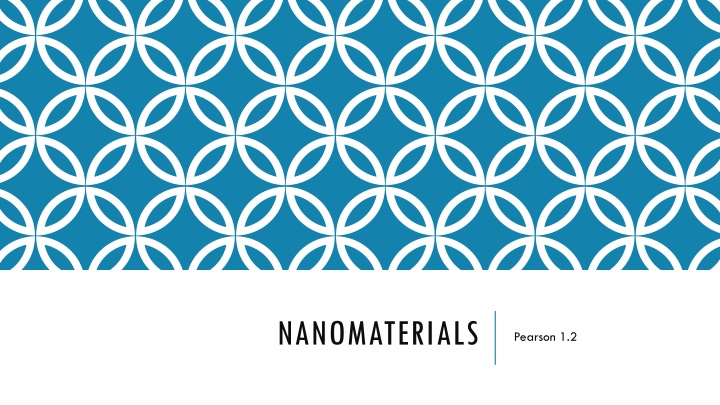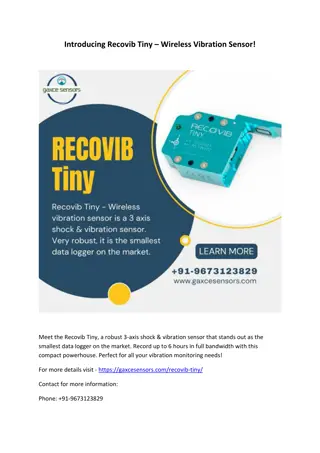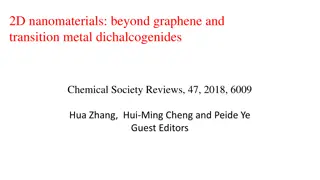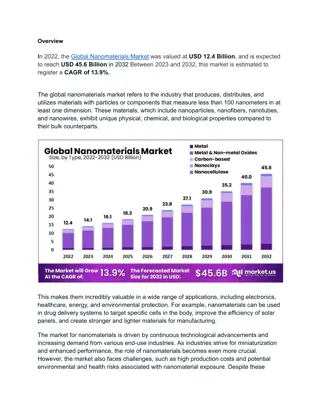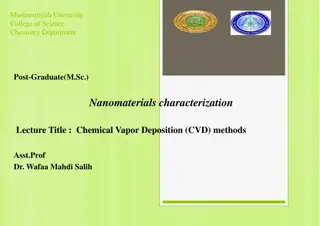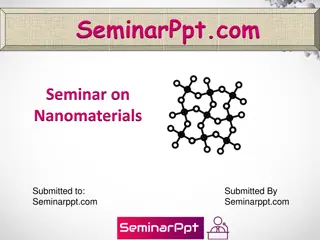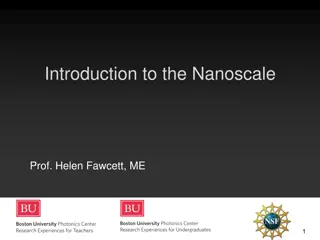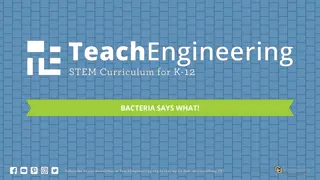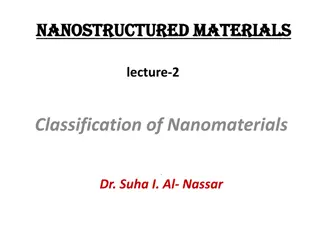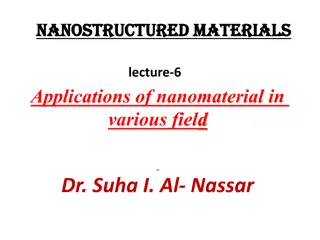Nanomaterials: Exploring the Tiny World
Nanotechnology is a real and scientific practice that focuses on producing and controlling incredibly tiny structures measured in nanometers (nm). Properties of materials change at the nanoscale, impacting melting point, conductivity, reactivity, and more. Quantum dots, zinc oxide nanoparticles, and self-cleaning paint are practical applications of nanomaterials. The potential of nanobots for medicinal purposes is an exciting frontier in this field.
Download Presentation

Please find below an Image/Link to download the presentation.
The content on the website is provided AS IS for your information and personal use only. It may not be sold, licensed, or shared on other websites without obtaining consent from the author.If you encounter any issues during the download, it is possible that the publisher has removed the file from their server.
You are allowed to download the files provided on this website for personal or commercial use, subject to the condition that they are used lawfully. All files are the property of their respective owners.
The content on the website is provided AS IS for your information and personal use only. It may not be sold, licensed, or shared on other websites without obtaining consent from the author.
E N D
Presentation Transcript
NANOMATERIALS Pearson 1.2
YOU MEAN FROM SCIENCE FICTION RIGHT? http://www.howstuffworks.com/nanotechnology.htm Nope! Nanotechnology is a very real and scientific practice. It has been developed for the past 30 years, since 1981. The famous physicist Richard Feynman first suggested it however, in 1959. (smart guy) Nanotechnology is the study of how to produce and control incredibly tiny structures. These structures are measured in nanometers (one billionth of a meter) Cannot see nanoparticles with a normal microscope, can see them with an atomic force microscope (also known as a scanning tunneling microscope)
RELATIVE LENGTHS 10 = 1 nm 1000 nm = 1 m Therefore: 1 nm = 1 billionth of a metre 1000 m = 1 mm 10 mm = 1 cm 1000 mm = 100 cm = 1 m
PROPERTIES Properties of materials are size-dependent in this scale range. Thus, when particle size is made to be nanoscale, properties such as melting point, fluorescence, electrical conductivity, magnetic permeability, and chemical reactivity change as a function of the size of the particle. - http://www.nano.gov/nanotech-101/special Nanomaterials have the stability of materials in the micro-scale as well as the chemical and physical properties of the molecular scale
QLEDS Quantum dots are inorganic semiconducting nanoparticles that, depending on their size, emit light at specific wavelengths.
SUNSCREEN Zinc oxide nanoparticles absorb light over the UV/visible spectrum which is not possible with atomic or molecular zinc.
SELF CLEANING PAINT In 1974, a German botanist used the water-repelling ability of lotus leaves, he called the product Lotusan The lotus leaves have a rough surface and the water repelled from the surface. Water-hating surfaces or substances are called hydrophobic Water forms droplets on hydrophobic surfaces Self-cleaning paint mimics this by forming large water droplets on the surface of the paint and washes away the dirt with it as the droplet falls to the ground Water-loving is known as hydrophilic
NANOBOTS Nano robots could be used for medicinal purposes They may complete tasks that are too complex or detailed for surgeons They also may deliver medicine or use technology to target specific problems, such as cancer cells The challenge: constructing robots small enough. Scientists are basing their model of a molecular motor found in mitochondria of cells.
NANOPHARMACEUTICALS When patients are exposed to chemotherapy or radiation therapy, the cancerous cells are destroyed, but so are the helpful cells you need Nanopharmaceuticals have smart shells that can deliver the healing medicine by targeting specific cells so they avoid destroying white blood cells and other cells in your body Nanopharmaceuticals are in the human trial stage now, in order to be approved, the drugs must show significant improvements in the patients Scientists at the University of Melbourne are developing a nanochip inserted into a bandaid to test for Malaria http://www.nanopharmaceuticals.org/news_2006/Cisplatin_micelle.html
QUESTIONS Select the option which best describes a nanomaterial: a) A particle in the range of 1 nm 1000 nm b) A material that is used in sunscreens and consists of particles that can been viewed under a microscope c) A material consisting of particles in the 1 nm 100 nm range d) A material consisting of particles in the 100 nm 1000 nm range
Lucarelli 8.10-8.14, Q10-14 HEALTH AND SAFETY Nelson p19-22 https://www.youtube.com/watch?v=MkpcUpattE8 Describe potential health risks associated with the use of nanoparticles. Describe and explain examples of environmental concerns associated with the use of nanomaterials. Provide a balanced discussion of the advantages and disadvantages of nanomaterials.
NANOMATERIALS RESEARCH Nanotechnology Definition Silver/Gold nanoparticles Quantum dots Lucarelli 8.10-8.14, Q10-14 Sunscreen Pearson 1.2 Carbon nanotubes Nanocomposites Dendrimers Manufacturing Nanoparticles Imaging Nanoparticles (TEM, SEM, AFM) Safety of nanoparticles
TODAY 1. STAWA Experiments 2 and 3 2. Answer STAWA Experiment Questions 3. Finish nanomaterials notes from yesterday 4. Nanomaterials questions Lucarelli Ch 8.10-8.14, Set 14 Qs 11-14 Pearson 1.2
